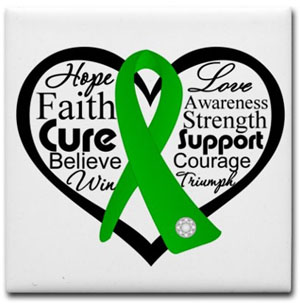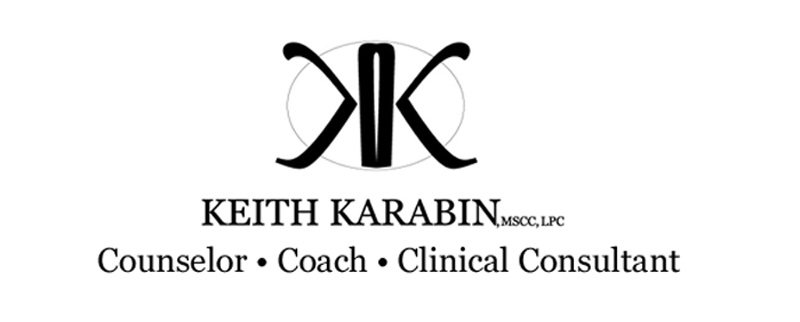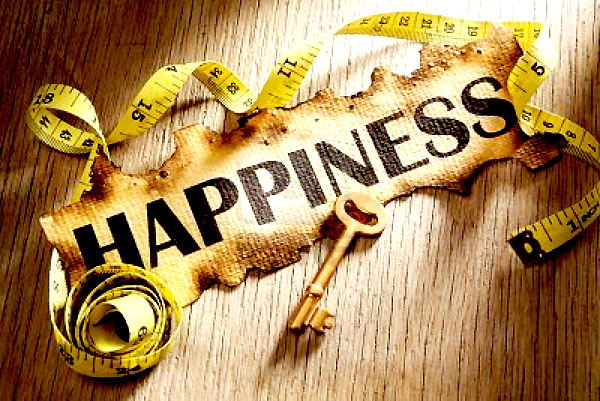Happiness Overcomes
“Success is not the key to happiness. Happiness is the key to success.”
-Dr. Albert Schweitzer, Theologian and Philosopher
The hope of a parent-to-be for their child is almost always the same; “Ten fingers, ten toes, a healthy, happy baby.” However, when that first hope, health, is not attained—when the baby is born with a disorder—all hopes seem threatened. Parents feel burdened in all areas of life and by a multitude of emotional strains; greatest being the unknown disorder that now threatens their child’s life and their dreams (Miller and Bachrach, 2006). Both parent and later the child, must be realistic about the disability, but it is vital that the second hope of a parent, that of a happy baby, rise higher, even as their estimation of health is re-evaluated.
 “In neurological disease, happiness is an important concept,” according to Yoram Barak and Anat Achiron, “it can be diminished…by the disease or in reaction to a poor prognosis and unpredictable course” but is vital in establishing prognosis for quality of life “resilience and character strengths…better over-all health…and many more benefits than just feeling good” (2009, p. 445-446). Last time we riffed on Jazz legend Herbie Hancock’s belief that “overcoming obstacles; that’s the key to happiness,” but the case study reveals happiness is also the key to overcoming obstacles.
“In neurological disease, happiness is an important concept,” according to Yoram Barak and Anat Achiron, “it can be diminished…by the disease or in reaction to a poor prognosis and unpredictable course” but is vital in establishing prognosis for quality of life “resilience and character strengths…better over-all health…and many more benefits than just feeling good” (2009, p. 445-446). Last time we riffed on Jazz legend Herbie Hancock’s belief that “overcoming obstacles; that’s the key to happiness,” but the case study reveals happiness is also the key to overcoming obstacles.
Following birth I was in an ICU incubator at Jean’s Hospital in Philadelphia for several weeks with jaundice, underdeveloped lungs and a concave chest. My mother, Mickey Karabin, said that my parents had “no idea…not a clue” what Cerebral Palsy was. “I thought you were going to die…I cried for days,” she said (M. Karabin, personal interview, August 7, 2014).
As we said in part one, though unknown until age two, I was born with apparent Spastic Diplegia Cerebral Palsy which affected my gait and Hemiplegic topographical distribution impairing my balance and left-side body control. Three months premature, my birth weight was low and feeding was difficult, especially breast feeding since I was in the NICU at Jeans Hospital and my mother—stuck home in the suburbs—didn’t drive. While experts recommend breast milk or formula for 12 months, premature births with CP need more nutrients for motor and neurological growth. My mother recalled that I was always hungry, even over the 2 to 4 hour standard, (Newman, 2011) so their solution was for my father to drive breast milk, with nutrient and antibody rich colostrum, 45 minutes to the hospital daily for me. “Nothing is easy, but everything is possible,” my parents said. “Know your limits, but find a way and never give up,” they taught me, and this was only their first example of the positive solution-focused adaptation which we had to live out.
“Rather than dwelling on deficits,” my parents unknowingly employed relationship based techniques in the 70s resembling our present “new era of early intervention for children with disabilities…” by choosing to “focus more on child and family strengths and the child’s adaptive capacities within the ecological setting.” This approach “places more emphasis on being solution focused and strength based” and was key in living beyond my disability (Atkins-Burnett & Allen-Meares, 2000, p. 373).
Face Reality on Your Terms
“Once we had a diagnosis we could do more, but we always
had laughter, communication…we loved. You never give up on
your kids, especially when it hurts.”
-Mom, 2014
 At birth I had average reflexive motor control, except in creeping ability. But my parents first noticed that I sat awkwardly, with bent back legs during the 3-6 month milestones of sitting and standing, then a great delay in the usual 9-12 month milestones that lead to walking alone had them seeking a diagnosis.
At birth I had average reflexive motor control, except in creeping ability. But my parents first noticed that I sat awkwardly, with bent back legs during the 3-6 month milestones of sitting and standing, then a great delay in the usual 9-12 month milestones that lead to walking alone had them seeking a diagnosis.
As my parents took me to Shriner’s and later Children’s Hospital in Philadelphia, they noted left leg tibial torsion causing my foot to turn inward as well as Achilles tendon contracture. This is the most commonly over-contracted muscle in children with Cerebral Palsy, causing toe-walking and difficulty standing (Miller and Bachrach, 2006).
Though Shriner’s hospital did not diagnose my CP, they did note the tibial torsion and gave my parents an infant “A frame” brace to harness me into when sleeping as an infant. “It had bolts, I had to use a wrench. I cried the whole time,” my mom said, “but I did it.” The doctor at Shriner’s repeatedly attempted Visual Gait Analysis, now considered too simplistic and error prone (Miller and Bachrach, 2006), which my dad summarized in frustration as “just watching you walk and doing nothing,” so they sought a second opinion. Once properly diagnosed at CHOP, I moved from the single brace to a set of orthopedic shoes and leg braces, and later to only a heel lift. I hated them all and fought for an “appearance of normalcy which is especially important for children [to] provide a significant boost in self esteem,” and is now possible thanks to the technology in modern running shoes (Miller and Bachrach, 2006, p.320).
In pre-school my parents took me to “a place down the city” that would have set me up with governmental support services, but my mom said I refused and even then my parents prioritized my independent assessment of my needs (Atkins-Burnett & Allen-Meares, 2000). Miller and Bachrach advise that in maximizing each child’s abilities through therapy, many methods are valuable and over all “therapy may be performed by many people, including parents, grandparents, schoolteachers, and even the child himself,” (2006 p. 450). We knew I needed help, but the form that help took had to be one that we all could get behind. Ultimately, therapy is the work of the special-needs kid, the more they own it, the better they do. Support services like case management, Individual Education Plans (which I eventually had) and therapies by professionals are awesome. We Karabins know our strengths and even in this lean tward to Do-It-Yourself projects.
Focus on Strengths First
“We never let you feel you were any less…there were times
when it broke my heart, but we never let you know.”
-Mom, 2014
 Both my parents believed that, when one sense is born weak “other senses take control” and compensate neurologically. For me, though my motor development milestones were delayed, my sensory and cognitive milestones were in some cases advanced. Moving from the visual cortex to hearing and language, then the prefrontal cortex and problem solving, infant and toddler “maturation in these domains is breathtaking…early experiences…and postures activate and strengthen specific neural pathways, whereas other pathways are not used and decay” (Newman, 2011, p.143-144). This process, called pruning, may scientifically justify what my parents experienced. As my neural pathways for walking were less utilized I developed a stronger than average vocabulary and sentence structure above the toddler norm of 40 words (Newman, 2011).
Both my parents believed that, when one sense is born weak “other senses take control” and compensate neurologically. For me, though my motor development milestones were delayed, my sensory and cognitive milestones were in some cases advanced. Moving from the visual cortex to hearing and language, then the prefrontal cortex and problem solving, infant and toddler “maturation in these domains is breathtaking…early experiences…and postures activate and strengthen specific neural pathways, whereas other pathways are not used and decay” (Newman, 2011, p.143-144). This process, called pruning, may scientifically justify what my parents experienced. As my neural pathways for walking were less utilized I developed a stronger than average vocabulary and sentence structure above the toddler norm of 40 words (Newman, 2011).
Think of your special-needs loved one, or yourself. In what ways are you just born strong? What are your other senses that have taken control? Build there first. Then ensure that environment you’re in nourishes these strengths. Finally, look to the closest relationships and note what they’re teaching. Do they foster dependency and disability or reality and adaptability?
“It’s good to wake up every day and say ‘it’ll be okay’ but it’s really hard to put it into practice,” mom said. But my parents were always thankful that I had a mild case of CP which helped coping with my diagnosis. In a home environment stressed financially and emotionally, this gratitude pervaded and may have fostered everything from “greater levels of positive affect, better quality of sleep, greater optimism and a greater sense of connectedness with others,” according to Barak and Achiron who studied the healing impact of Positive Psychology methods on disability (2009, p. 447).
As my toddler social connectedness grew, so did my interests. My parents encouraged my mind and interests appropriately to my developmental level and in a way that consistently pushed me to do my part, which promoted greater positive developmental outcomes consistent with helping those with disabilities “recognize their strengths and abilities and use them to their advantage” not concentrate on the negative, despite a believed evolutionary tendency to do so (Atkins-Burnett & Allen-Meares, 2000) (Barak & Achiron, 2009, p. 446).
Find a Way. Again and Again.
“Life just got harder but you took it in stride.”
-Mom, 2014
The course of treatment above incorporating parents, patient and one specialist, maintained baseline adaptive function until it was recommended around age eight, that I get “Z-plasty” surgery to correct the Achilles tendon contracture. Miller and Bachrach say this “involves making an open incision that exposes the tendon; a Z-cut in the tendon [then] the tendon ends slide apart and are sutured into place again,” but to me involved a summer suffered in a cast, squirting my siblings with a garden hose as they ran to play in the pool (2006, p. 354). Months of physical therapy followed plus a physical therapist in elementary school. My prognosis improved not by denying my reality but by facing it and adapting to it with strength-focused gratitude and positivity.
“You do have a disability,” I was told by my parents. “Do not be ashamed of who you are and seek help. Know your limits but never give up because if you want to do it you can find a way.” Gait correction was only part of the improvement. Surmounting the obstacles of my birth meant combining these interventions with a reality-based, strength focused attitude promoting happiness (Barak & Achiron, 2009) in a home that didn’t see problems in my “developmental domains as the primary organizer of intervention” over “the centrality of relationships to all development, particularly in the earliest of years” (Atkins-Burnett & Allen-Meares, 2000, p.372).
Overcoming anything in life is a challenge. But so is life itself. Face your reality with gratitude, focus on your strengths first and, most of all, never lose the happiness found in living to the best of yourself, because that is the power which truly overcomes.
__________________________________________________
Atkins-Burnett, S. and Allen-Meares, P. (2000) Infants and toddlers with disabilities: Relationship-based approaches. Social Work. 45, 4.
Barak, Y. and Achiron, A. (2009) Happiness and Neurological Diseases. Expert Review of Neurotheraputics 9(4):445-59.
Miller, F. and Bachrach, S. Cerebral Palsy: A Complete Guide for Caregiving. Johns Hopkins University Press, 2006.
Newman, Barbara. Development Through Life: A Psychosocial Approach. 11th Edition. Cengage Learning, 2011. VitalBook file. Bookshelf.


